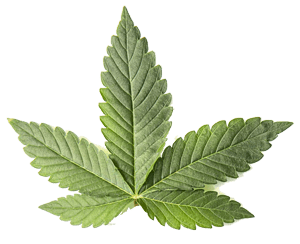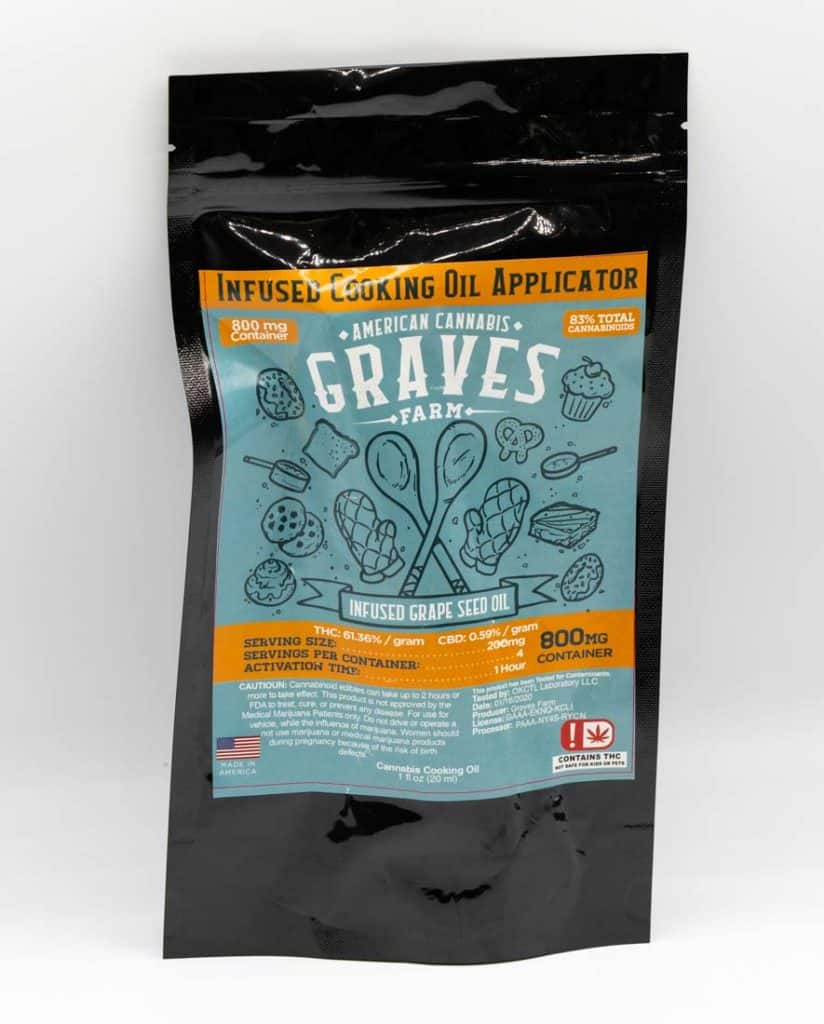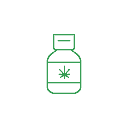
Marijuana is a hot topic these days, as the once criminalized plant is now available over the counter in high-end dispensaries across the country, for both recreational and medicinal usage. Many people don’t know the ins and outs of the plant, how it works, and what’s fact or fiction.
Despite thousands of years of usage, a century of prohibition has led to a lot of stigma in places like the United States. Modern science and medical research are starting to ease negative perceptions, however, and we now know more than ever before when it comes to the medical uses of this miracle plant.
What is Cannabis?
Cannabis is a naturally occurring genus of plant with psychoactive properties that is native to Asia, but is now grown worldwide for recreational, medicinal, and commercial purposes. There are three primary species of cannabis, known as Cannabis Indica, Cannabis Sativa, and Cannabis Ruderalis. There is also hemp which is the same species of plant as cannabis but has much lower THC properties and is mainly used for manufacturing.
Despite thousands of years of usage, a century of prohibition has led to a lot of stigma in places like the United States. Modern science and medical research are starting to ease negative perceptions, however, and we now know more than ever before when it comes to the medical uses of this miracle plant.
Hemp vs. Marijuana
Cannabis is known by many other names, and most are synonymous with few actual differences. While historically the plant has been known as marijuana, many people are trying to leave that terminology in the past.
For one, marijuana has long been associated with criminals and drug addicts due to prohibition propaganda. Rebranding it as cannabis allows the industry to soften their pitch towards people who can benefit from cannabis usage, but who still associate marijuana with criminal activity.
Additionally, there is some public dialogue regarding whether or not the term marijuana has racist roots.
Regardless of why the terminology is changing, it’s definitely becoming far more common to hear cannabis instead of marijuana.

Then of course, there’s hemp.
Hemp is a class of Sativa that is grown for commercial purposes. Hemp is one of the fastest-growing plants on the planet, and it has lots of industrial uses. Refined hemp is used to manufacture paper, rope, biodegradable plastic alternatives, paint, animal feed, biofuels, insulation, clothing, textiles, and much more.
Hemp typically contains lower concentrations of THC than medicinal and recreational cannabis, and has a higher concentration of cannabidiol (CBD). Hemp is often harvested for CBD, which has medicinal properties but no psychoactive effects.
Humans have been growing and harvesting hemp for thousands of years for myriad uses. The Chinese used hemp to make rope, paper, shoes, and clothes thousands of years ago. The ropes on Christopher Columbus’s ships were made of hemp, and U.S. President George Washington even grew hemp as a cash crop, as did founding fathers James Madison, Thomas Jefferson, and Andrew Jackson.
In addition to cannabis, marijuana, and hemp, there are countless other terminologies for the plant. Dank, weed, pot, dope, hashish, grass, Mary Jane, ganja, and reefer are but a few of the terms that have seen popular usage over the years.

Weed Strains
The two primary species of cannabis are sativa and indica, but there are lots of different weed strains out there, and as cross-species breeding continues to grow, these original two categories are being used less frequently.
Sativa vs. Indica
Traditionally, sativa is known for creating a “head high,” which counteracts stress and anxiety, while helping some people focus. Sativa typically has lower doses of CBD and larger amounts of THC. It helps many people feel energized and productive.
Indica is also known as “in the couch” for its relaxing effects on the body. Indicas have a higher CBD count and help with muscular problems, nausea, and pain treatment.
There are all sorts of hybrid plants out there that are grown for specific purposes such as anxiety reduction, easing the symptoms of chemotherapy, and other medical issues. There is also a third species called ruderalis, which doesn’t typically have any medical or recreational uses.
Best Weed Strains
Every marijuana smoker has a long list of weed strains that they swear by. Some help you focus mentally, others help you relax physically, some reportedly enhance the sexual experience, and many claim to help with specific medical issues.
The fact is, there isn’t a true best cannabis strain. Although certain strains have common results, everyone is capable of reacting differently, so it’s important to sample diverse strains and figure out which strains are best for you and your needs.
Another thing that’s important to remember, is that most of these marijuana classifications aren’t scientifically identical. Two different growers may identify two different strains by the same name due to their similar effects, even if they’re genetically different.
Here are a few popular strains, but there are hundreds out there.
Acapulco Gold
This strain originates in Acapulco, Mexico and is known for inducing euphoria and high levels of energy. Individuals who suffer from fatigue, pain, nausea, and stress often enjoy its effects. Led Zeppelin even made reference to this strain in their 1973 song “Over the Hills and Far Away.”
Afghan Kush
Hailing from the Hindu Kush mountains in Afghanistan, this strain is known for aiding in relaxation, inducing sleep, improving appetite, and relieving pain.
Blue Dream
Blue Dream is a mild sedative that helps relieve pain, ease cramping, and help you to sleep.
Bubba Kush
Bubba Kush is popular with individuals who suffer from insomnia, or who can’t get their brain to shut off at night.
Granddaddy Purple
This is another strain that’s popular for relieving stress, fighting insomnia, and inducing euphoria. It’s also known to increase hunger, which can help people who struggle with eating enough.
LA Confidential
Like many of the other strains listed here, LA Confidential is known for relaxing and sleep-inducing effects, but it’s also known for anti-inflammatory and pain-reducing effects in people with chronic pain.
Maui Wowie
Maui Wowie is popular with creative types who need a spurt of inspiration. From artists to musicians to writers, Maui Wowie is beloved for helping people get over the hump of creative blockage. It’s also known for reducing fatigue and inspiring productivity.
Pineapple Express
This strain was popularized by the hit 2008 stoner comedy starring Seth Rogen and James Franco, but has been around for a long time and is named for its pineapple-like scent.
Purple Kush
This wildly popular strain is known for inducing a blissful feeling that helps with relaxation, de-stressing, and sleeping. Many people who suffer from chronic pain and muscle spasms report getting relief from Purple Kush.
Sour Diesel
This energizing strain is known for helping with productivity in individuals who are burnt out, low energy, or ADHD.
Cannabis Concentrates 101
Cannabis concentrates are very popular these days due to their potency.
Cannabis concentrates contain larger amounts of cannabinoids, terpenes, and other compounds that offer medicinal benefits. Most concentrates average THC levels in the 50-60% range, whereas traditional medicinal flower tends to be around 20%.
THC is extracted from the cannabis using solvents like ethanol, CO2, and butane, but those solvents are removed from the final product, leaving only natural cannabis extract behind. There are also solventless extracts that are created through heat and pressure.

Concentrates are also made from both “live” and “cured” plants. Typically, cannabis is cured after it’s harvested so that there is little to no moisture in the plant when it’s distributed. This process removes some of the terpenes in the flower, and some flavor. Live concentrates are made from cannabis that was frozen as soon as it was harvested, and was never cured. These concentrates are more flavorful and smell stronger, but can also be more expensive.
The process for smoking a concentrate is known as “dabbing.” Small portions of the concentrate are smoked through a pipe, vaporizer, or dab rig.
Dab rigs are glass water pipes that are made specifically for cannabis concentrates. Unlike water bongs, they have a nail instead of a bowl. The nail, called a “banger,” is heated with a butane torch before the dab is placed on it. The hot nail heats the dab, creating a thick cloud of vapor that’s full of flavor.
You can also use vaporizers to smoke concentrates, but it’s important to use a vape that’s specifically designed for dabs. Some vapes are only meant for dry flower.
Types of Cannabis Concentrate
There are several different types of cannabis concentrates.
Budder, also known as badder and batter, is similar to butter in texture. It’s solid and waxy, similar to crumble, but thicker and creamier. It’s often added to joints or blunts, and can be either cured or live. Budder has very high levels of terpenes with over 80% THC.
Distillate is extremely potent and can be as much as 99% THC. It’s low on terpenes, however, so it lacks in flavor. Distillates are often used in vapes.
Hash comes in thick, tiny bricks known as trichomes. There is also bubble hash, which looks like kief but is still most similar to hash in its texture and flavor.
Kief is comprised of trichome crystals that have been physically removed from the plant material. Although it has lower levels of THC than most other concentrates, it’s easy to add to joints or smoke out of bowls.
Live Resin is made using frozen and thawed flower, with 50-70% THC. It’s known for its intense flavor and aroma.
Rosin uses a solvent extraction process that creates a flavorful product full of terpenes.
Sauce is extra gooey, like apple sauce, and contains very high levels of terpenes. This concentrate is popular with people who prioritize flavor over strength. That doesn’t mean it’s not still far stronger than traditional flower, however.
Shatter is thin and brittle, and tends to break easily when handled. Shatter usually has between 60-80% THC and looks like a sheet of glass.
Wax looks like what it’s named for. It’s gooey and yellowish-brown with high levels of THC. There is also Crumble, which is known as honeycomb wax and is more solid and easier to handle than most waxes. Wax’s high potency makes it popular for relieving chronic pain, depression, and anxiety.
Cannabidiol (CBD)
Cannabidiol, more commonly known as CBD, is an active ingredient in cannabis that doesn’t actually cause a high. CBD is non-addictive, non-intoxicating, and safe for use at any age.
CBD is legal in all 50 states, with varying degrees of restriction. In most states you don’t even need a medical cannabis license to obtain or use it, and it can be purchased over the counter.
Cannabidiol is widely known for its medicinal properties and wide range of therapeutic uses. CBD is used to treat epilepsy, seizures, anxiety, insomnia, chronic pain, arthritis, and more.
What are cannabinoids?
Cannabinoids is a term referring to the naturally occurring compounds found in the cannabis plant. There are around 113 compounds under the cannabinoid banner. The two most common are cannabidiol and delta-9 tetrahydrocannabinol, known commonly as THC.
Cannabidiol pronunciation
Sounds like: Ka – nuh – buh – dai – uhl

Can you take too much CBD?
While the vast majority of CBD users experience nothing but good things, as with any medicine, there can be side effects in a small portion of the population. Some users report nausea, fatigue, and irritability, and it can heighten the effects of other medications in your system similar to grapefruit juice.
CBD is primarily marketed as a supplement, not an actual medicine, and the Food and Drug Administration doesn’t currently regulate the safety and purity of dietary supplements. This means that there are less quality control guarantees with CBD than in actual medicines. Consider CBD on the same level as protein shakes, fish oil, and vitamins.
In large doses (approximately 20,000 mg), CBD can cause extreme drowsiness, lethargy, nausea, diarrhoea, upset stomach, and disorientation. However, it’s very unlikely to be lethal. Lethal doses have been achieved in animal testing, but not in human consumption.
Cannabidiol life
While many people choose to use CBD for one or two conditions, there are many people who are opting to incorporate this healthy, helpful supplement into their entire life.
CBD can be used in just about anything you consume, from your foods and drinks to your skincare regimen. There are CBD lip balms, CBD bath bombs, CBD vapes, and even CBD for pets! Many animals who struggle with anxiety and appetite problems benefit from CBD treats and oils.
Tetrahydrocannabinol (THC)
Tetrahydrocannabinol is the psychoactive cannabinoid that allows marijuana users to attain a high when consuming it. Commonly known as THC, tetrahydrocannabinol was discovered to be the high-inducing component of cannabis in 1964. It affects the brain receptors responsible for thinking, memory, pleasure, coordination, and movement.
Delta 9 THC
What most people commonly know as THC is more specifically the Delta-9-THC isomer. It’s only one of the 113+ cannabinoids in the cannabis plant. Delta 9 THC is the primary component behind marijuana’s psychoactive effects.

Delta 8 THC
Recently getting attention is the Delta-8-THC isomer. Delta 8 users report similar medicinal effects to Delta 9, such as appetite improvement, pain reduction, and sleep aid, but with lower psychoactive effects.
If Delta 8 proves to have similar medical effects but with less of a high, it could become a strong middle ground between traditional THC and CBD. However, it occurs at much lower levels than Delta 9, naturally, and is currently being cultivated from hemp.
The 2018 Farm Bill legalized the production of hemp that has less than 0.3% THC. It also removed hemp-derived products from Schedule I status under the Controlled Substances Act. That 0.3% threshold applies specifically to Delta-9 THC, with no restrictions on the lesser-known Delta-8 alternative.
The legality of Delta-8 THC remains hotly debated and unclear, but at present time the FDA and DEA aren’t currently enforcing a prohibition of the cannabinoid. It also hasn’t gone through any pre-market regulatory processes, and since it’s never been widely used or studied in a concentrated state, it’s unclear if it could have negative health effects.
THC Oil
While smoking marijuana has always been the most popular way to ingest THC, it’s not the only way. THC is now commonly extracted and suspended in carrier oils like MCT or hemp oil. The fluid form is often even more psychoactive than flower.
THC oil can easily be vaporized, but are also ingested through dabbing, sublingual dosing, or as an additive in cooking or drinks.
THC Tincture
A THC tincture is a cannabis-infused alcohol that has a long history of medicinal use in the United States up until the time that cannabis was criminalized. There are THC tinctures, CBD tinctures, and tinctures that contain both cannabinoids. Tinctures are often taken sublingually.
THC oil can easily be vaporized, but are also ingested through dabbing, sublingual dosing, or as an additive in cooking or drinks.
THC vs. CBD
THC and CBD are both cannabinoids that contribute to the chemical makeup of the cannabis plant. While THC creates the high that most people associate with marijuana, CBD has a lot of medicinal properties and no mind-altering effects.
Both substances can be extracted from cannabis and taken in isolation of the other, and both have medicinal properties. Many medical issues can be treated with either cannabinoid, and it’s up to you to decide which is right for you.
Is Marijuana Legal?
It depends on where you are. Different states, such as Colorado, have legalized it recreationally and medicinally. Other states, like Oklahoma, require a medical card to purchase cannabis.
It’s important to remember that even though cannabis has been legalized for medicinal use in Oklahoma, it’s still illegal federally. The plant is classified as a Schedule I drug by the DEA, and possession is punishable by up to one year in jail and a $1000 fine for a first conviction.
So far, the federal government has not moved to prohibit the legalization of marijuana at the state-level, but that makes the legality of the plant very tentative. It’s important to research any state you plan on visiting before packing your cannabis, because what you purchased legally in Oklahoma can get you locked up in Tennessee.

Marijuana Vocabulary
Accessories: Anything that is used in the production, distribution, or ingestion of marijuana. Commonly referred to as paraphernalia.
Aeroponics: A method of growing marijuana that is suspended in the air.
Butane Hash Oil Extraction: The process in which marijuana flowers are heated with butane, creating a resin known as wax or shatter.
Cannabichromene: The second-most common cannabinoid in a marijuana plant. It is not psychoactive.
Cure: The process of drying marijuana flowers slowly.
Dispensary: A legal marijuana storefront. Can be medical or recreational.
Edible: A cannabis product that is intended to be eaten. Commonly seen edibles include gummies and brownies.
The Endocannabinoid System: The system of receptors and enzymes in your body that break up marijuana compounds and interact with them.
Endocannabinoids: Cannabinoids that are naturally produced by our bodies.
Flower: The smokable portions of the cannabis. Does not include stems and seeds.
Hybrid: Hybrids are strains of marijuana that are a genetic cross between two or more other strains. Hybrids are created to combine the effects of different strains.
Hydroponics: The process of growing cannabis with water instead of soil.
Indica: A strain of marijuana that grows shorter than Sativa and has narrow leaves.
Nabilone (Cesamet): An artificial THC pharmaceutical approved in the United States for treating nausea and vomiting commonly associated with cancer treatment.
Phytocannabinoids: Cannabinoids that are produced by the cannabis plant.
Sativa: A strain of marijuana that grows tall and has thin leaves.
Schedule I Drug: Substances that currently have no accepted medical use in the United States, and are commonly abused. The production, distribution, and use of these drugs is prohibited by the U.S. Drug Enforcement Agency.
Synthetic Cannabis: Man-made alternatives to marijuana that are often dangerous to use, such as K2.
Terpenes: The aromatic compounds that naturally occur in lots of different plants, including marijuana. Terpenes are what gives the different strains of marijuana unique flavors and smells.
Topical: Cannabis products that are applied directly to the skin, such as lotion, oils, and lip balms.

About D-Luxe
D-Luxe is a firm built on integrity by a team working in unison towards a common goal of providing the highest level of customer satisfaction with the FOCUS of delivering the most superior products. FOCUS stands for Firm Values, Optimal products, Customer satisfaction, United team, and Sustainable quality, and each represents the core values of the company.
The property creates an experience that anyone and everyone can enjoy. The campus, located at 1013 S Main St. Sapulpa, Okla., includes covered gazebos, a food truck court, outdoor games, an area for food vendors, an amphitheater, a dog park, and an event center.






